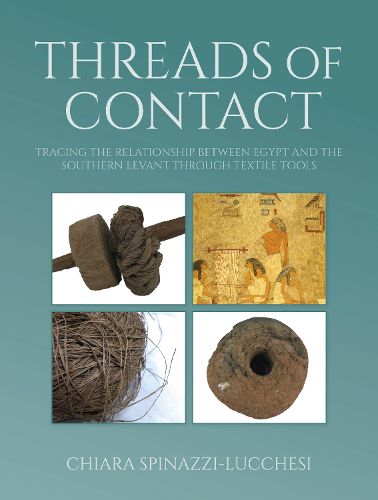Readings Newsletter
Become a Readings Member to make your shopping experience even easier.
Sign in or sign up for free!
You’re not far away from qualifying for FREE standard shipping within Australia
You’ve qualified for FREE standard shipping within Australia
The cart is loading…






Textile tools offer a fascinating and yet intimate approach to ancient people. Textile production has been one of the core activities for millennia, spanning from domestic production to royal needs. Textiles were light and easy to transport goods, often exchanged over long distances. Technology and knowhow, however, might not have always traveled so easily. This work examines spinning and weaving tools from the Southern Levant (inland and coastal) and Egypt. The chronology of the study is broad, ranging from the Neolithic until the beginning of the Persian period (600 BC). The objects are investigated from both a diachronic and synchronic perspective to understand their evolution and continuity of use, as well as regional differences and textile production methods. The two areas present an only apparent discontinuity, as political boundaries gave way at various historical moments and the two areas had very close contacts, such as during the Second Intermediate Period of Egypt or the Egyptian domination of the Late Bronze Age. This seems to be reflected in textile documentation, which shows the appearance of Egyptian tools in the Levant, such as spinning bowls, and Levantine tools in Egypt, such as loom weights. However, the result is not so predictable. AUTHOR: Chiara Spinazzi-Lucchesi is a researcher at the Centre for Textile Research, University of Copenhagen. She completed her PhD at the University of Ca' Foscari (Venice) in 2019. Her main research interests are textiles and textile tools in the Levant and Egypt. 50 b/w drawings and photographs, 25 colour photographs, charts, maps
$9.00 standard shipping within Australia
FREE standard shipping within Australia for orders over $100.00
Express & International shipping calculated at checkout
Textile tools offer a fascinating and yet intimate approach to ancient people. Textile production has been one of the core activities for millennia, spanning from domestic production to royal needs. Textiles were light and easy to transport goods, often exchanged over long distances. Technology and knowhow, however, might not have always traveled so easily. This work examines spinning and weaving tools from the Southern Levant (inland and coastal) and Egypt. The chronology of the study is broad, ranging from the Neolithic until the beginning of the Persian period (600 BC). The objects are investigated from both a diachronic and synchronic perspective to understand their evolution and continuity of use, as well as regional differences and textile production methods. The two areas present an only apparent discontinuity, as political boundaries gave way at various historical moments and the two areas had very close contacts, such as during the Second Intermediate Period of Egypt or the Egyptian domination of the Late Bronze Age. This seems to be reflected in textile documentation, which shows the appearance of Egyptian tools in the Levant, such as spinning bowls, and Levantine tools in Egypt, such as loom weights. However, the result is not so predictable. AUTHOR: Chiara Spinazzi-Lucchesi is a researcher at the Centre for Textile Research, University of Copenhagen. She completed her PhD at the University of Ca' Foscari (Venice) in 2019. Her main research interests are textiles and textile tools in the Levant and Egypt. 50 b/w drawings and photographs, 25 colour photographs, charts, maps